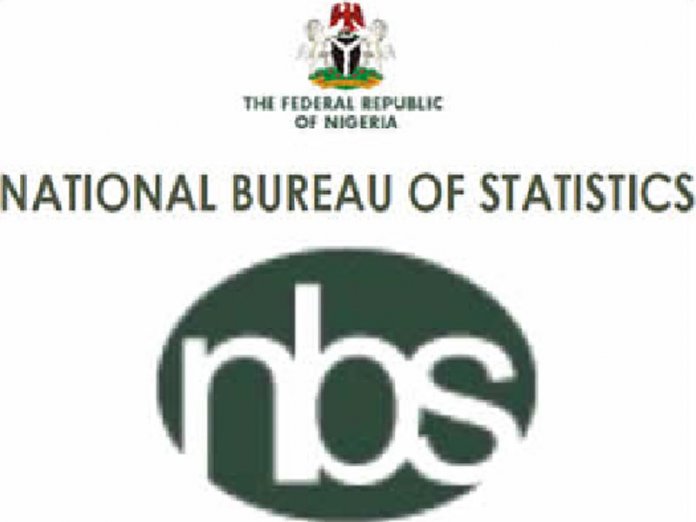 Twenty months after the coronavirus (COVID-19) pandemic hit the Nigerian economy, the Q3 2021 Gross Domestic Product (GDP) data from the National Bureau of Statistics (NBS) suggested a very impressive recovery trend.
Twenty months after the coronavirus (COVID-19) pandemic hit the Nigerian economy, the Q3 2021 Gross Domestic Product (GDP) data from the National Bureau of Statistics (NBS) suggested a very impressive recovery trend.
Analysis of the NBS data showed that real GDP grew by 4.0% year-on-year (YoY), compared to -3.6% in Q3 2020.
The nominal GDP for Q3 2021 was also up 15.4% (YoY), compared to 3.9% in Q3 2020. On a quarter-on-quarter (QoQ) basis, the real GDP grew by 11.1% (compared to -0.3% in Q2 2021), whilst nominal GDP also grew by 15.7% QoQ, better than the -2.2% recorded in Q2 2021.
Commenting on the report, analysts Verraki Partners said, the numbers are reflective of higher economic activity and sustained recovery.
Further analysis of the data showed that the oil sector which now accounts for 7.5% of the GDP declined by 10.7% YoY (12.1% growth QoQ) in Q3 2021. The performance of the Nigerian oil and gas sector has remained sub-optimal, recording consistent decline (11.0% on the average) in the last six quarters. According to the data, average crude oil production in Q3 2021 was 1.57 million barrels per day (mbpd), 6.0% below the average production in Q3 2020 and 0.27mbpd below 2021 budget assumption.
On the flip side, average Brent crude oil price increased 76.0% from 43$pb in Q3 2020 to 76$pb in Q3 2021, partly responsible for the $6billion year-to-date growth in the foreign reserves to $41.4billion.
“The non-oil sector accounts for 92.5% of the GDP and has shown impressive resilience (3.7% average growth) in the last four quarters, offering greatest sustainable growth potential. The sector grew by 5.4% YoY in real terms (6.7% in Q2 2021) and driven by activities in the trade, ICT, manufacturing, finance and insurance, among others. Despite value chain dislocations that came with the pandemic, a few non-oil economic sub-sectors performed relatively well and are forecast to sustain a growth trend in the mid to long-term.
“The top six non-oil economic sectors that have shown the best resilience in the last four quarters account for approximately 60% of Nigeria’s GDP. Amongst these sectors were Agriculture, Construction, ICT Services, Real Estate, Food, Beverage and Tobacco and Cement. These sectors collectively have the capacity to deliver superior economic diversification outcomes for the country and should ideally form the core of mid-to-long-term economic policy, Verraki Partners said.
Further analysis showed that the agriculture sector grew by 7.9% YoY in nominal terms in Q3 2021 (compared to 13.5% recorded in Q3 2020).
The analysts believe major policy interventions are necessary to revive the Nigerian agricultural sector and avert possible food crisis.
The report showed that the construction sector grew by 47.7% YoY in nominal terms, with a 7% average real growth in the last four quarters.
Estimated at about N16 trillion, the sector has recorded a 6.9% average real growth in the last four quarters.
Also, the ICT Sector recorded 6.1% YoY real growth in Q3 2021; and 11.2% in nominal terms. Valued at N13.3trillion (14.0% of the GDP), the sector has shown impressive resilience in the last four quarters with an average real growth of 5.1%.
Similarly, the Real Estate sector expanded by 10% YoY in Q3 2021, and has sustained a positive quarterly YoY growth trend since Q1 2021, save for Q4 2020 when it declined by 0.8%.
Food, Beverage and Tobacco sub-sector accounts for 37% of the total manufacturing sector output in Nigeria, and 5% of the country’s GDP. The sector expanded by 5.0% YoY and 14.6% QoQ respectively in Q3 2021, with 4.3% average growth every quarter since Q1 2020. Driven largely by the country’s favorable demographics and the consumption behaviors of Nigerians, the sector holds great potential for the country’s manufacturing sector and employment creation.
According to the analysts, the cement is another sector the country must pay a close attention to. The sector accounts for 18.0% of manufacturing output in Nigeria and 2.0% of the country’s GDP. It grew by 4.1% YoY in Q3 2021 and has sustained a positive (3.1% average) quarterly growth in 2021.The impressive performance in Q2 and Q3 2021 is connected to the reopening of economic activities in Nigeria and other west African markets.
“So, what does the 4% Q3 2021 real GDP growth mean to an average Nigerian or business? Whilst the index gives a sense of the direction of economic output, it fails to communicate economic progress, standard of living and inclusiveness, “they said.



